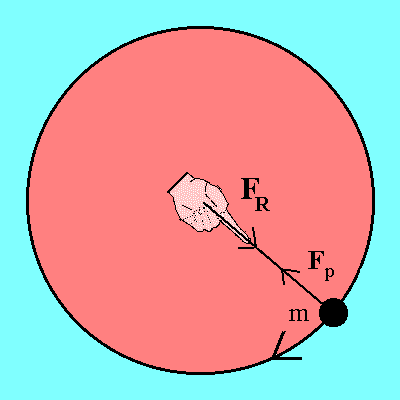

The necessity to consider a centrifugal force can best be understood
from the following:
Assume a mass on a spring that swings around in a circle with constant
velocity. This spring will show some tension.
From the position of an observer in a reference system which rotates
with the mass one finds:
The necessity to consider the centrifugal force simply arises from the fact, that the reference system fixed to the earth, within which we consider bullet motion is rotating. Newton´s second law only applies in an "inertial" reference system, which is a reference system which either rests or which moves with constant linear speed. Obviously, the rotating earth is not an inertial system. The centrifugal force - as well as the coriolis force - must be considered as additional "fictious" forces to apply Newtons second law
even in a reference system, which is fixed to the rotating earth.